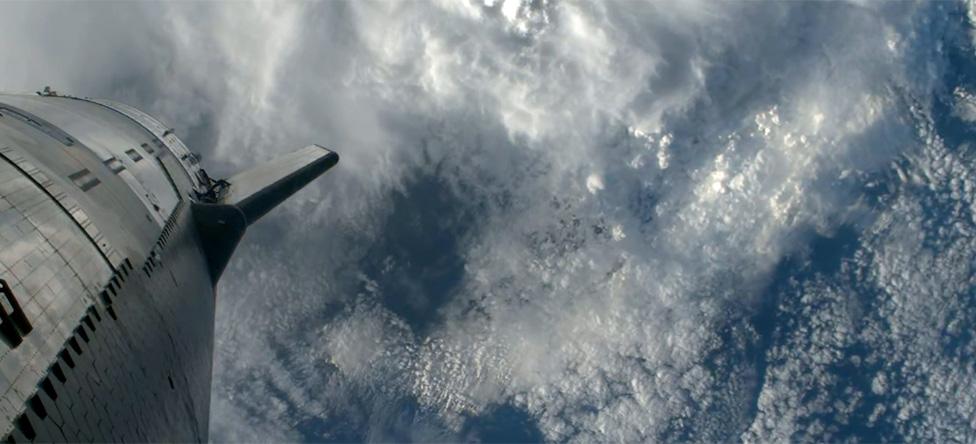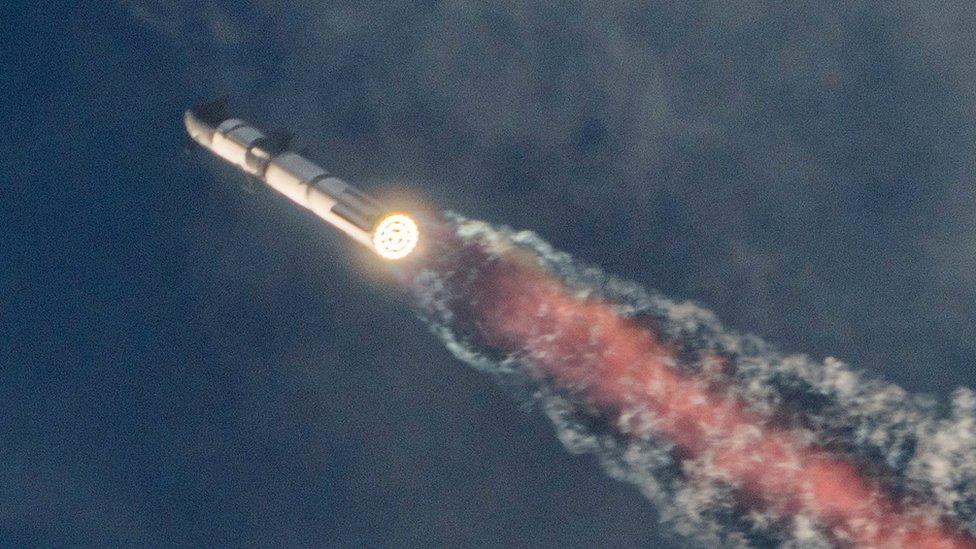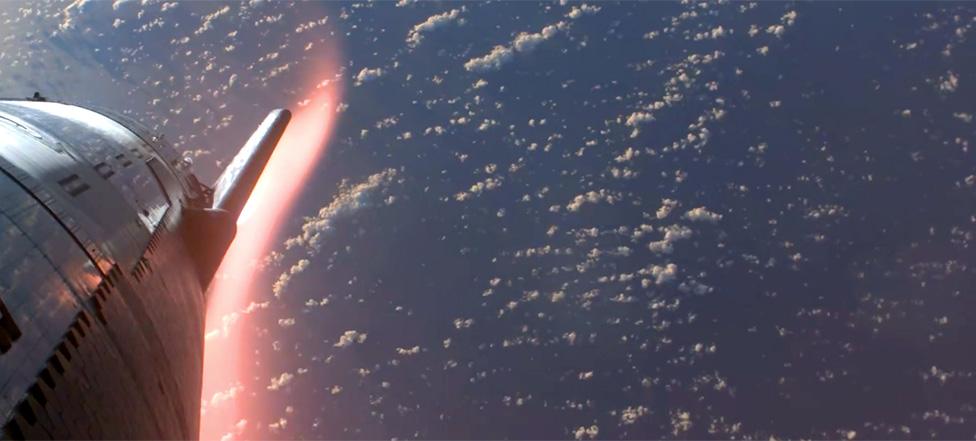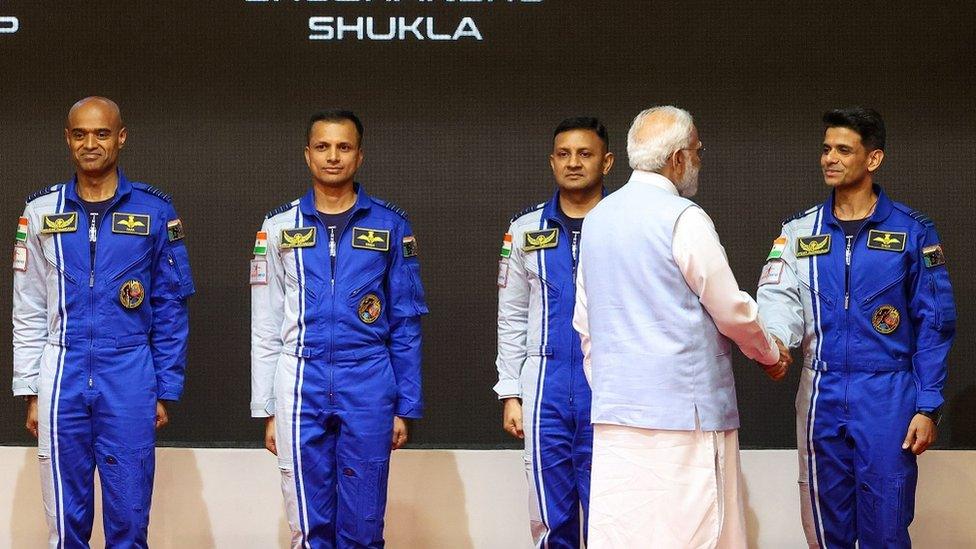Space X: Starship goes 'farther than ever' on third test flight
- Published
- comments
SpaceX launches Starship on third try
It was third time lucky for the launch of the mega-rocket that will soon take Artemis astronauts to the Moon - but not everything went to plan.
The latest test flight of the Space X rocket, called Starship, is the most powerful ever built and is a huge part of Nasa's Artemis programme to put astronauts back on the Moon for the first time in 50 years.
The rocket is meant to be re-usable and although it made it to space on this tests, it didn't manage its return to Earth after contact was lost and it crashed.
Space X said it was "incredible to see how far we got this time around".

The Ship was aiming for a splashdown in the Indian Ocean
Space X boss Elon Musk is hopeful that "Starship will take humanity to Mars," but before people can climb on board, it need to be rigorously tested to make sure it's safe.
The launch went much better than the previous test flights last year. The first in April ended in disaster after the giant rocket system, blew up just four minutes after launch.
Contact was lost after 8 minutes during the second launch in November and self-destructed.

This time things went a bit more smoothly. The rocket left its launch mount and climbed into space as planned.
Two minutes and 44 seconds into the flight, the bottom part of the rocket separated successfully.
Normally, when a rocket returns to Earth, most of it burns up when it hits the planet's atmosphere.
However Starship's bottom section, called the Super Heavy booster is designed to be completely reusable, so after separating from the top part of the rocket, it's meant to be able land safely back on Earth.

Just before radio contact went down, you can see flames called plasma surrounded the Ship as it came down
But contact went down as the rocket started its re-entry to Earth.
It was hoped the booster might have been able to complete a controlled drop into the sea but instead it came in very fast and hit the water hard.
The other half, the Ship, was expected to re-ignite an engine but this also didn't happen - and experts are still trying to work out why.

Huge crowds had gathered on nearby beaches in Texas to watch the launch
Overall, this was a huge improvement on previous test flights.
Bill Nelson, the Nasa Administrator, said: "Congrats to @SpaceX on a successful test flight!
"Starship has soared into the heavens. Together, we are making great strides through Artemis to return humanity to the Moon — then look onward to Mars."
More research will be done with six more test flights due this year.
- Published13 March 2024

- Published3 March 2024

- Published27 February 2024

